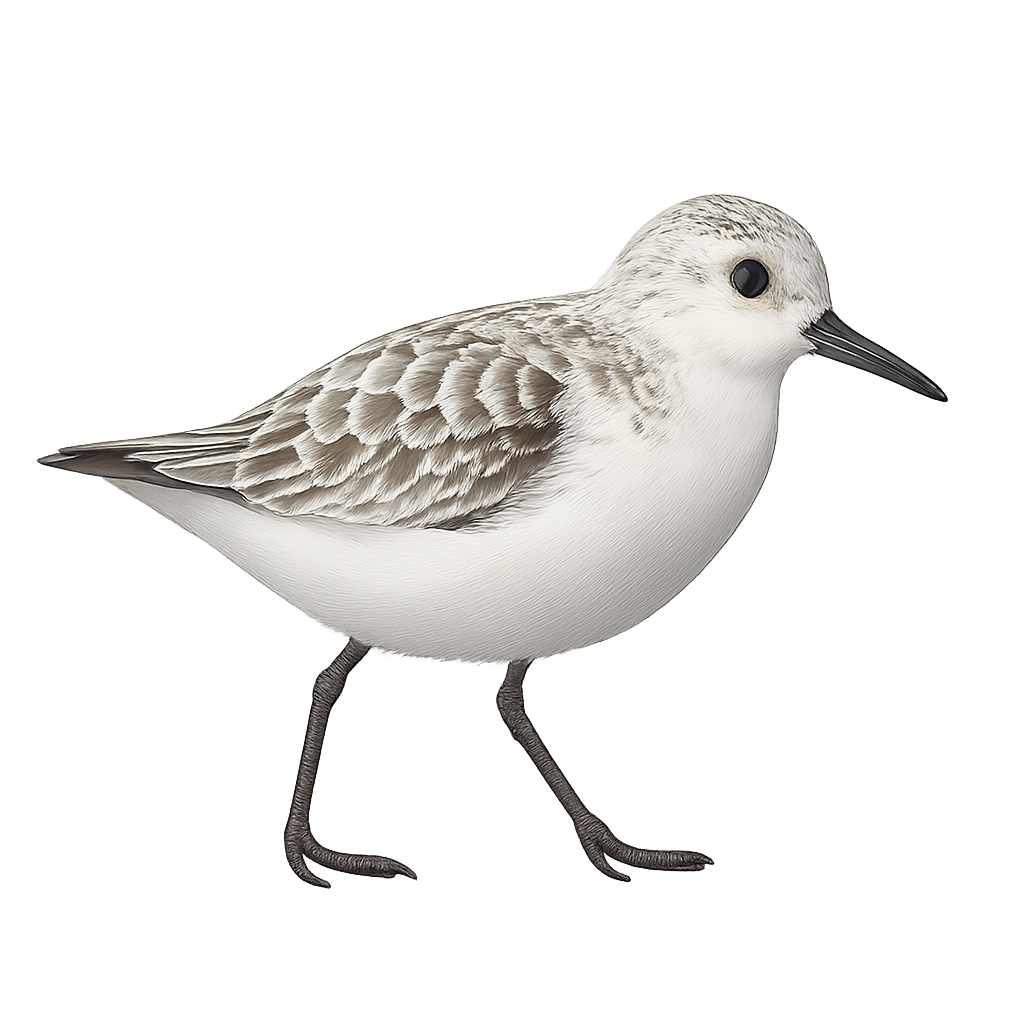Your wildlife photography guide.
Explore the sanderling in detail, study its behavior, prepare your shots.
Where to observe and photograph the sanderling in the wild
Learn where and when to spot the sanderling in the wild, how to identify the species based on distinctive features, and what natural environments it inhabits. The WildlifePhotographer app offers tailored photography tips that reflect the sanderling’s behavior, helping you capture better wildlife images. Explore the full species profile for key information including description, habitat, active periods, and approach techniques.
Sanderling
Scientific name: Calidris alba

IUCN Status: Least Concern
Family: SCOLOPACIDAE
Group: Birds
Sensitivity to human approach: Suspicious
Minimum approach distance: 30 m
Courtship display: June to July
Incubation: 23-25 jours
Hatchings: June to August
Habitat:
Beaches, coastal zones, and estuaries in Africa, Asia, Europe, and the Americas, often seen on sandy shores during migration
Activity period :
Primarily active during the day, with peak activity in the morning and late afternoon.
Identification and description:
The Sanderling is a small wader with a subtle plumage, mostly white and light gray, known for its quick movements along the shore to capture marine insects, crustaceans, and mollusks. This small migratory bird inhabits beaches and coastal areas of Europe, Asia, North America, and South America, primarily feeding at low tide. The Sanderling is often seen in groups, moving in perfect synchronization, a fascinating sight to observe.
During migration, it covers long distances, leaving the cold regions of winter to reach temperate or tropical beaches where it finds food. While not currently threatened, it is sensitive to human disturbance and the loss of its coastal habitats.
Recommended lens:
400 mm – adjust based on distance, desired framing (portrait or habitat), and approach conditions.
Photography tips:
Use a telephoto lens to photograph the sanderling, especially when it is moving quickly along beaches or shorelines. The soft light of the morning or evening is ideal to capture its details without disturbing its natural behavior. Be discreet and respect their space to avoid disturbing them, especially during the breeding season.
The WildlifePhotographer App is coming soon!
Be the first to explore the best nature spots, track rutting seasons, log your observations, and observe more wildlife.
Already 1 429 wildlife lovers subscribed worldwide

